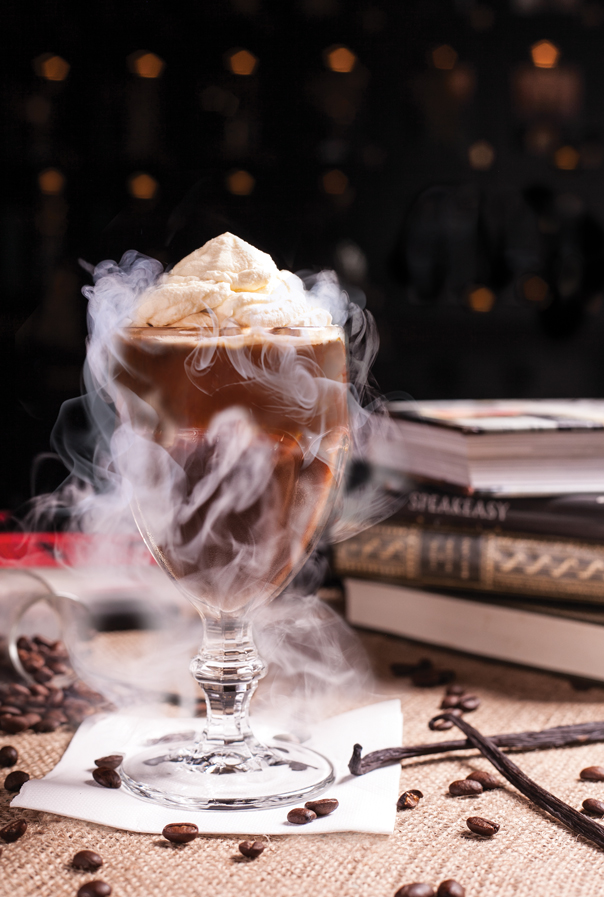Story by Sam Bygrave
We live in a modern age, yet so much of what we do behind the bar has been around for centuries. Indeed, there’s been a bit of a reaction against the wave of bars that began to employ foams and airs and spherification — a whole host of what was termed “molecular mixology”. But perhaps that’s not the best name for it, said Philip Gandevia, of Sydney’s Eau de Vie Apothecary. He said that the terms “contemporary and avant-garde are good.”
“I tend to avoid molecular – it seems too gimmicky, and it was quite often poorly done as people sought to steal techniques from the kitchen, often without understanding them fully,” he said. “There was a time I recall where ever drink seemed to be finished with a foam – then we realised that the humble egg white does a perfectly good job and a good hard shake was all that was required.”
Instead, Gandevia recommends not getting carried away with the smoke and mirrors aspect of these kind of techniques.
“Don’t ever use a technique unless it improves the drinking experience,” he said.
“Using an ISO whip to make a Ramos Gin Fizz — smart. Using an ISO whip to infuse things quickly — also smart.
“Using an ISO whip to do the foam thing… see above. And I think caviars are rather temperamental.”
Techniques
Liquid Nitrogen
Let’s get one thing out of the way right up front: liquid nitrogen, used improperly, can seriously hurt someone — even kill them. You need to know what you’re doing. You need to be sensible. For heavens sake don’t be drunk when you’re using it.
Dave Arnold’s cooking issues blog has a great primer on what you can do with liquid nitrogen, and also the dangers involved (you know, like explosions).
That being said, guys like Gandevia at Eau de Vie Apothecary and a number of other bars have used the stuff to great effect.
“I like liquid nitrogen. I think that aside from theatre, which is what most people see, it has the best thermodynamic properties around. After using it for around 5 years, it is a tool which must be used safely, and wisely and must always be respected.”
Immersion circulators
Have you heard of sous vide cooking? It’s a French term that means “under vacuum” and it has been employed by chefs around the world. The basic gist is that it offers precise control over temperature — a piece of meat cooked sous vide will be uniformly cooked. And the immersion circulator allows you to cook at low, even temperatures.
For drinks, this means that the traditional method of steeping ingredients in spirit can be improved and sped up. Bartenders like Gandevia report better flavours from the technique, too.
“I really like an immersion circulator and a vac sealer. Prep is so much easier, and flavour extraction far more precise than any other method,” he said.
ISO Whips
Yes, you could use this to create a foam. But perhaps more useful is the canister’s ability to quickly infuse spirits with fresh ingredients, like aromatic herbs and berries, without the application of heat. And it is a pretty simple process.
Fill a cream canister with your desired spirit and the fresh ingredients you wish to infuse. Once sealed and charged the spirit in the canister will take on the flavour of the ingredients within minutes due to the pressure created by the gas cartridge forcing the spirit into the fruit or herbs used.


